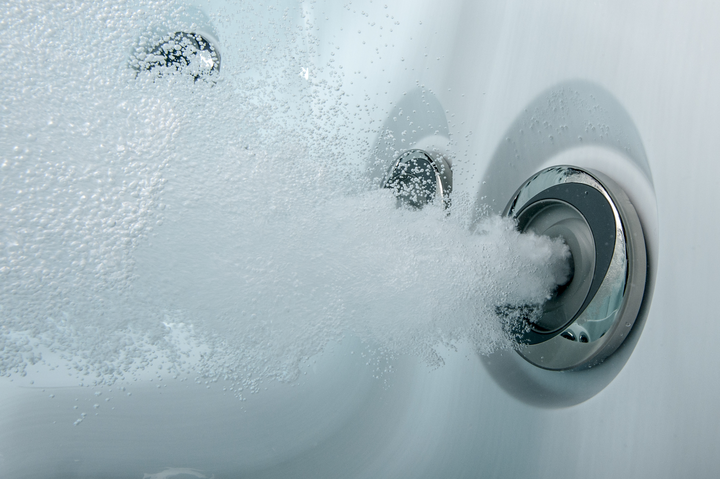Dive Into Hydrotherapy for Peak Performance

Dive Into Hydrotherapy for Peak Performance
Are your muscles aching following your daily run? Is your back sore post-workout? According to the Gatorade Sports Science Institute’s report, Recovery Techniques for Athletes, one of the best ways to bounce back from a grueling workout is to get in the water.
Why Getting Wet Works
Hydrotherapy, as it’s officially called, boasts a steady flow of benefits for athletes—professional, backyard, and armchair—including the promotion of post-workout recovery.
Since up to 65 percent of the body consists of water, it should come as no surprise that water has therapeutic effects. Hydrotherapy refers to the wide range of treatments and exercises designed to be done in the water, whether in a swimming pool, hot tub, special hydrotherapy pool, steam room, or even your family bathtub or shower.
Go Hot and Cold Post-Workout
Nothing beats a soak in a Jacuzzi® Hot Tub following a strenuous workout or a stressful workday. Heated water is a natural relaxer, improving circulation and lowering blood pressure while de-stressing the body.
After you enjoy your soak, try turning down the temperature. Exposure to cold water for short periods of time on a regular basis can help the body increase vitality and metabolism. Some athletes even choose to transition from their hot soak or steam by taking a quick, cold shower. Changing the temperature of the water from hot to cold causes dilated blood vessels to contract, which aids circulation and results in increased energy and a sense of well-being.
How Hydrotherapy Helps
Getting in the water—hot or cold—is excellent for post-workout pain. The soothing waters are helpful in counteracting back pain, arthritis, and everyday sprains and bruises. Indeed, hydrotherapy provides a flood of benefits for those pushing for peak performance in all aspects of life, including:
- Reduction of muscle spasms. Superficial heat, such as the water in a heated tub or pool, can soothe muscles and reduce spasms and swelling.
- Increased range of motion in joints. Exercising while joints are supported by water increases mobility and span of movement.
- Increased circulation. This improves energy and healing time.
- Improved balance and coordination. Exercising against the water’s resistance increases the body awareness needed for good coordination, while also building muscle strength.
- Boosted immunity. The increased blood flow circulates your white blood cells around the body, and with them, the lymph that moves unwanted materials from the body, thus strengthening your immune system.
- Hydrotherapy helps you relax and reduce stress while lowering your blood pressure and releasing endorphins. An added benefit: Endorphins energize you and strengthen the immune system.
- In a steam room, sauna, or hot tub, you’ll be sweating bullets and flushing away the toxins from your body.
- Easier exercise. If your feet hurt pounding the pavement, try water walking. Water’s buoyancy can make exercise easier on the joints and the muscles. Plus, the resistance provided by the water will increase the effectiveness of some repetitive exercises.
As with any physical activity, the healthiest way to incorporate hydrotherapy into your fitness routine is to start by talking with your doctor. He or she can best advise you on how to get in peak physical shape—and how to recover from fitness—both in and out of the water.
Read more about how a full body soak will do your full body good.